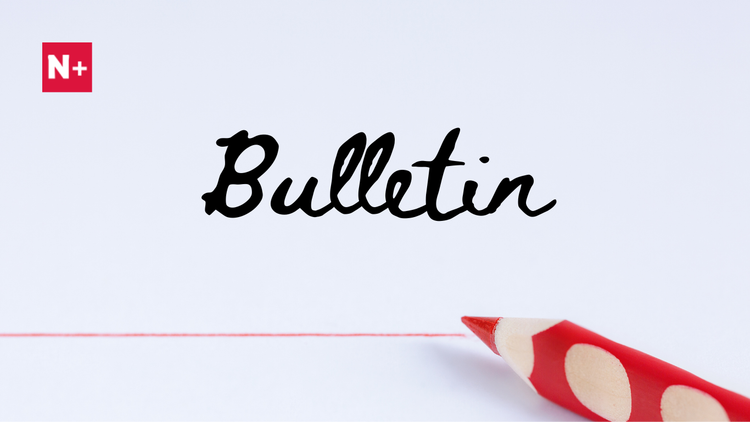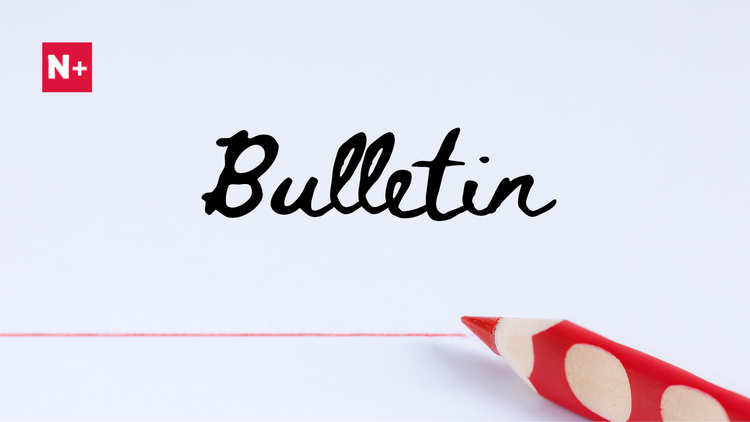Policy Push for Long-Term Huiminbao: The Impact on Innovative Medicine

In early January, the National Administration of Financial Regulation (NAFR) issued a draft titled "Notice on Promoting the Smooth and Orderly Development of Urban Customized Commercial Medical Insurance (Draft for Soliciting Opinions)." This draft, a crucial step in the ongoing discussions on the policy framework for urban customized medical insurance schemes, known as "Huiminbao" or “City Commercial Health Insurance,” is open for feedback from insurance firms. It follows a joint announcement by NAFR and the National Healthcare Security Administration (NHSA) in October 2023 on the same topic.
In a significant move, the January draft explicitly recommends establishing Huiminbao as a long-term medical insurance product with adjustable premium rates. This potential implementation is driven by the need to address the current limitations of short-term medical insurance. It could bring about a transformative impact on China’s commercial health insurance sector, notably by bolstering the role of Commercial Health Insurance (CHI) in funding high-value treatments that are currently beyond the scope of basic social medical insurance (BMI).
Limitations of Short-Term Medical Insurance
Insurance acts as a mechanism for handling risks by transferring or managing them directly. As a financial tool, medical insurance manages medical risk by distributing it across different populations and, over time, through long-term protection facilitated by mutual assistance.
Unlike other insurance types, medical insurance also involves medical management, aiming to modify the behaviors of both healthcare providers and patients to reduce risk. This requires prolonged monitoring and management for effectiveness and cannot be achieved quickly.
Under the short-term medical insurance framework, however, commercial insurers lack incentives to integrate with health management. Their primary focus is on screening healthy individuals to minimize or avoid payouts. This compromises health insurance's ability to aggregate payment volume, ultimately diminishing its inherent value.
This is a primary factor that explains why China's commercial insurers have predominantly relied on control tools offered by social medical insurance, resulting in limited coverage for high-value therapies not included in the BMI catalog.
Why Short-Term Medical Insurance Dominates China's Commercial Sector
Most of China's commercial health insurance plans that provide direct reimbursement for medical expenses are offered as one-year policies. Insurers retain the authority to adjust the underwriting conditions annually for insured individuals, while policyholders can switch insurers or decide not to renew their policies each year.
Two main factors have contributed to this phenomenon.
The Impact of Group Health Insurance
In 2002, the State Council allowed Chinese companies to provide employees with commercial supplementary medical insurance, capping contributions at 4% of total salary expenses. Businesses are permitted to deduct these premium costs up to this cap directly. This move led to a surge in group health insurance, making it the primary commercial health coverage after critical illness insurance in China, with a market size exceeding 20 billion yuan.
Budget considerations lead companies to prefer one-year insurance policies. This, coupled with intense market competition, results in frequent policy switches among corporate clients, price wars, and a focus on short-term risks, neglecting long-term health management.
Regulatory Constraints
The 2006 "Health Insurance Management Measures" by the China Banking and Insurance Regulatory Commission (CBIRC), a predecessor of NAFR, have also bolstered the prevalence of short-term medical insurance. These regulations classify long-term health insurance as policies exceeding one year or featuring guaranteed renewals, imposing strict compliance requirements. Guaranteed renewal mandates insurers must renew coverage at consistent premiums under original terms upon policyholder request, a policy challenging for expense reimbursement policies tied to medical costs due to factors like technological advances, changes in disease prevalence, and individual moral hazards.
In contrast, short-term health insurance benefits from regulatory flexibility, allowing rate adjustments within a set range, making it a preferred choice for insurers amidst regulatory and economic pressures.
Challenges Confronting Huiminbao
Huiminbao stands at the intersection of basic medical insurance and traditional commercial health insurance, with a mission to protect all individuals against severe illnesses, including those with pre-existing medical conditions.
Initially introduced in Shen Zhen in 2015 as a supplementary insurance to lessen the financial burden of out-of-pocket expenses for services covered under BMI, Huiminbao has expanded its coverage to include costly surgical supplies, specialty medications, and advanced treatments not covered by standard social medical health insurance plans, gaining considerable attention and government support.
Nonetheless, Huiminbao faces two main challenges:
- “Reimbursing without Managing”: In line with other short-term health insurance models, Huiminbao primarily reimburses expenses post-incident, lacking substantial integration with health management. This model hampers the program's effectiveness in lowering medical cost risks among individuals with pre-existing conditions, which is essential for such insurance plans.
- Uniform Pricing and Coverage: Huiminbao generally offers uniform coverage and pricing with little regard to risk classifications, except for varying reimbursement rates for pre-existing conditions, effectively cross-subsidizing patients at the expense of the healthy.
While seemingly patient-friendly, these strategies contribute to a “death spiral,” limit the scheme’s payment efficiency, and may encourage unnecessary use of medical resources.
For example, despite Huiminbao’s recognition for covering specialty drugs, the reimbursement rates for innovative medicines are notably low. Publicly available data reveals that of approximately 800 million yuan disbursed by Shanghai Huiminbao, only a minor portion was allocated for specialty drugs. Moreover, conditions such as "lumbar disc herniation" and "knee joint diseases," which involve elective surgeries with significant differences in the cost of surgical materials, receive disproportionally high reimbursements.
This indicates that the program might not be as effective in curbing the financial impact of major healthcare expenses as initially hoped and may instead inadvertently encourage the utilization of pricier medical treatments.
Implications of the January Draft Opinion for Huiminbao and Future Developments
Promoting Long-Term Medical Insurance
In November 2019, the China Banking and Insurance Regulatory Commission broke away from its previous 2006 guidelines by issuing the "Administrative Measures for Health Insurance." This new regulation clarified that insurance companies can stipulate premium adjustments for long-term medical insurance products in their policies, eliminating a major regulatory barrier that had hindered the growth of long-term medical insurance in China.
The January draft further advances the promotion of long-term medical insurance by introducing adjustable premiums that can be modified based on risk classifications.
“Regarding development and design, insurance companies should be responsible for product development … The duration of insurance should be reasonably determined according to individuals' protection needs, and it's recommended to offer long-term medical insurance with adjustable premiums.”
“Customized medical insurance may now adopt appropriate risk classification or rate grouping, setting premiums based on the group's average risk level. Pricing for pre-existing conditions should not be set separately, while deductibles and reimbursement ratios can be adjusted moderately.”
Advancing Health Management Integration
The draft recognizes the mismatch between the short-term focus of health insurance and the long-term approach needed for health management. It recommends structuring Huiminbao as a long-term solution with adjustable premiums to foster a deeper integration with health management practices.
The criticality of addressing medical cost risks for all types of insurance—whether for specialty drugs, specific diseases, or pre-existing conditions—cannot be overstated. Without the fusion of medical management and financial strategies, these initiatives are doomed to fail, trapped in unsustainable speculation, leveraging, and risk management cycles.
The January draft aims to guide Huiminbao toward a more stable and effective future, promoting the adoption of risk-based pricing and holistic medical management to further expand coverage beyond the confines of BMI, a crucial step in enhancing access to high-value therapies.
Market Ramifications
It’s also worth noting that this policy proposal, if implemented, will likely displace some existing participants in the Huiminbao market, such as property insurers without comprehensive health management capabilities, paving the way for specialized health insurers that can merge financial protection with effective health risk management.
References:
- 两部门就惠民保征求意见 鼓励设计为费率可调的长期医疗保险, 中国证券报, 2024-1-9, https://www.cs.com.cn/xwzx/hg/202401/t20240109_6384159.html
- [深度」国内健康险市场为何“生长”缓慢?杨翎, 圆角星, 2016-09-06, https://mp.weixin.qq.com/s?__biz=MzAwMTkxMjg1Mg==&mid=2247483684&idx=1&sn=236494f922c677c262b395b2132b9ea7&scene=21
- 一款真正的惠民保:兼顾多方诉求,切实缓解因病致贫风险, 蔡卓 慧保天下, 2023-01-14, https://mp.weixin.qq.com/s?__biz=MzA4NzY1NjAxNQ==&mid=2650457970&idx=2&sn=843baea5d0e1626c6e9bd63eab64af4c&scene=21
- “惠民保”如何续写增长故事?财经五月花, 2023-12-26, https://www.huxiu.com/article/2470025.html
- Closing the Affordability Gap: Can China’s Commercial Health Insurance Deliver? 2024-1-17, NRDL+ Newsletter, https://nrdlplus.com/en/nrdlplus-newsletter-archive/closing-the-affordability-gap-can-chinas-commercial-health-insurance-deliver
- 健康险新基建的宏大叙事,万字长文详述中外商保目录建立与启发, 今日保 2022-04-12, https://mp.weixin.qq.com/s/iBZLg6ELjVpNNziCxTG5qw





